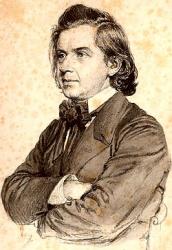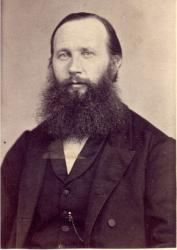1641 - 1703 Person Name: Christoph Titius Hymnal Number: 163 Author of "By Sin Weighed Down, And Sorely Stricken" in Hymnal for Church and Home Titius, Christoph, son of Christoph Titius or Tietze, pastor at Wilkau, near Kamslau, in Silesia, was born at Wilkau, May 24, 1641. He entered the St. Mary Magdalene Gymnasium, at Breslau, in 1654, and the Aegidien (St. Giles) Gymnasium at Nürnberg, in 1660. He matriculated as a student of Theology at the University of Altdorf, in 1662. After completing his studies at the University of Jena, in 1664, he acted for two years as a family tutor. On Aug. 24, 1666, he was ordained as pastor of Laubenzedel, near Gunzenhausen, in Franconia; and then became, in 1671, pastor at Henfenfeld, near Nürnberg. In 1685 he was appointed diaconus at Hersbruck, near Nürnberg, became archidiaconus in June, 1701, and in Nov., 1701, was appointed chief pastor and inspector of schools. He died at Hersbruck, Feb. 21, 1703 .
Titius had begun to write hymns while at the Nürnberg Gymnasium, and his best known hymns originated either then or during his University course. They appeared in his Sünden-Schmertzen, Trost im Hertzen, Todten-Kertzen, erwecket, entdecket, angestecket von Christophoro Titio Silesio, Theol. St., at Nürnberg, 1663 [Library of the Prediger-Serninar at Hannover], with 15 hymns; in the 2nd enlarged edition, published as Himmel-Heise, Seelen-Speise, Engel-Weise, &c. , Nürnberg, 1670 [Berlin Library], with 45 hymns; and in the 3rd further enlarged ed. published as Vorige und neue Morgen- und Abend-Catechismus . . . Lieder, &c., Nürnberg, 1701 [Gottingen Library] with 55 hymns. The most popular were those of the first edition many of which passed into the German hymn-books of the 17th century, and various of which are still found in recent collections. The best of them are hearty and popular in style, earnest and scriptural in tone, and sententious.
Two of Titius's hymns have passed into English, viz.:—
i. 0 du Schopfer aller Dinge. Holy Communion. This is a hymn of penitence before Holy Communion, and was first published in 1663, as above, as No. ii., in 9 stanzas of 8 lines. Translated as "Bow Thine ear, I now implore Thee." By Dr. H. Mills, 1845, p. 38.
ii. Sollt es gleich bisweilen scheinen. Cross and Consolation. His most popular hymn, first published in 1663, as No. vi., in 10 stanzas of 4 lines, entitled ”Hymn of Consolation." Included in Crüger's Praxis, 1675, the Nürnberg Gesang-Buch, 1676, Freylinghausen's Gesang-Buch, 1704, the Berlin Geistliche Lieder, 1863, No. 856, and many others, sometimes printed as 5 stanzas of 8 lines.
Lauxmann relates (Koch, viii. 488) that C. A. Dann, chief pastor of St. Leonard's Church, at Stuttgart, having spoken somewhat freely at the funeral of one of the courtplayers, had been relegated in 1812 to the village of Oieschingen in the Swabian Alb [in 1819 to the neighbouring village of Mössingen]. The king at last granted the earnest desire of the Stuttgart people for his return, and on Feb. 5, 1824, recalled him to Stuttgart. That night four friends walked over to Mössingen, and in the early morning conveyed the news to Dann by singing this hymn at the door of his room.
The translation in common use is:—
Seems it in my anguish lone. This is a good translation, omitting st. vi., by Miss Winkworth, in her Lyra Ger, 2nd Ser., 1858, p. 201; repeated in her Chorale Book for England, 1863, No. 146. Included in full in the Ohio Lutheran Hymnal, 1880, and abridged in the St. Aidan's College Hymn Book, 1864.
Other translations are:—
(1) "Yea should it ev'n to man appear." This is a translation of st. i., as st. v. of No. 1062, in the Supplement of 1808 to the Moravian Hymn Book, 1801 (1886, No. 505). (2) “Deem we sometimes, spirit-shaken." In L. Rehfuess's Church at Sea, 1868, p. 44, only st. i., vi. being from this hymn. [Rev. James Mearns, M.A.]
-- Excerpts from John Julian, Dictionary of Hymnology (1907)
Christoph Tietze


 My Starred Hymns
My Starred Hymns







